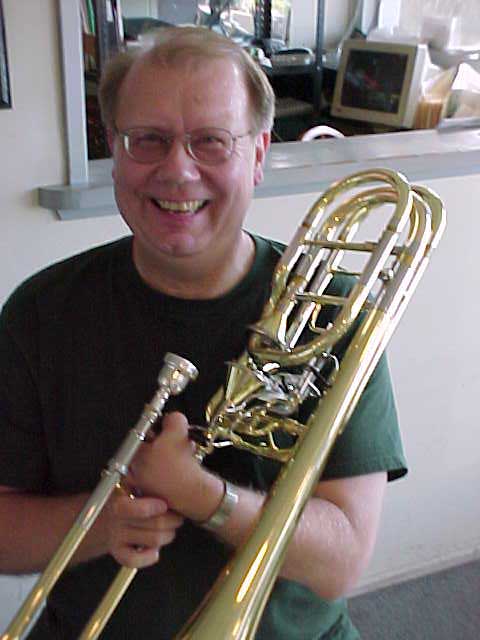Special Needs in Music
Oberloh Woodwind and Brass Works has been approached
many times over the years to construct uniquely designed devices to aid
performers with special physical needs. Daniel Oberloh has long had
a personal understanding of what physical disability is about, having dealt
with it throughout his life first hand. The need for physical aids in music
performance has existed as long as there has been musical instruments and
our staff takes great pride in our ability to design, fabricate and deliver
these rather complex but necessary bits of clock work.
Edwards Bass Trombone
valve modification
In mid-summer 2001, Oberloh Woodwind and Brass Works was requested to construct a special, one-of-a-kind linkage for an Edwards duel inline (Thayer valve) bass trombone.
The problem was very complicated! We had a request for a three way mechanism that was to be operated by a single appendage, one left thumb. Making matters worse, the thumb was short one joint. In addition, we also had to account for the need of the left hand to support a rather heavy instrument. Fine, the biggest problem was that we really did not have much of a left hand to work with, only a thumb and a wrist.
The owner, Mr. Terry Paananen, seemed to have faith in our ability to deliver and was quite patient. For that, to him we say thank you.
The following are a series of images taken during the completion of the final fitting prior to plating and others are after plating and final assembly.
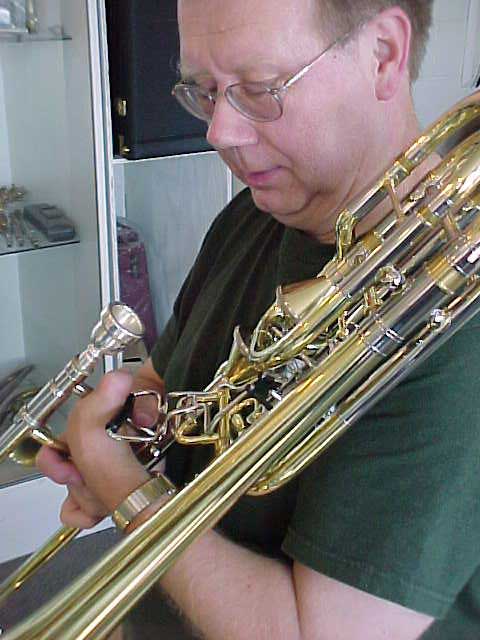
The owner inspecting his new friend at the time of
delivery.
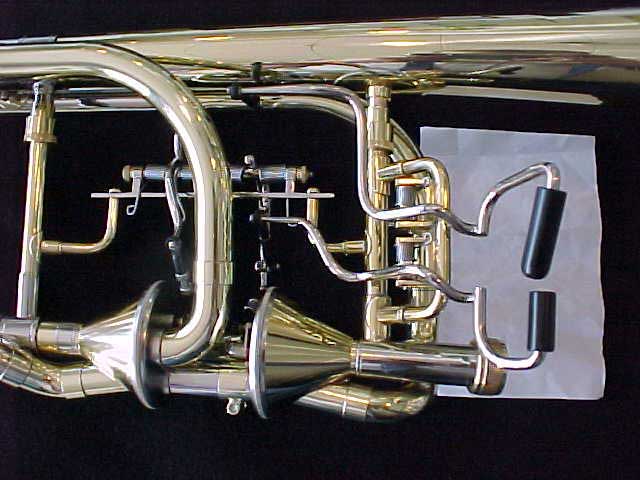
The above image shows the inside shot of the levers. They are positioned in such a way that Mr. Paananen was able to operate them both independently or in tandem. The levers were spring loaded as were the secondary linkage that joined levers to the valve rotors to disperse the spring load through out the mechanism and to avoid binding or sluggishness. The above image was taken after nickel plating and final assembly.
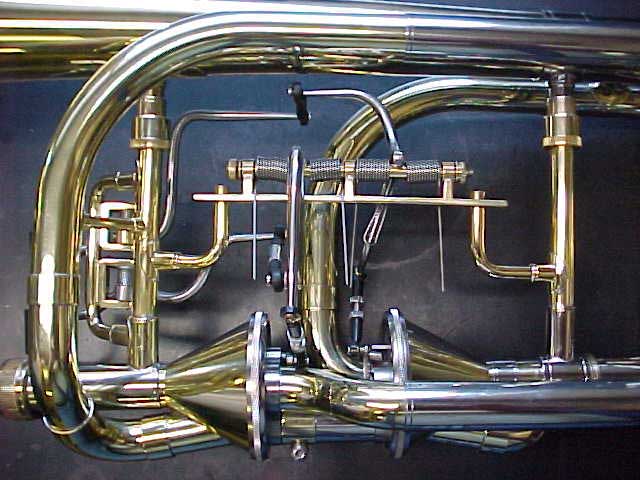

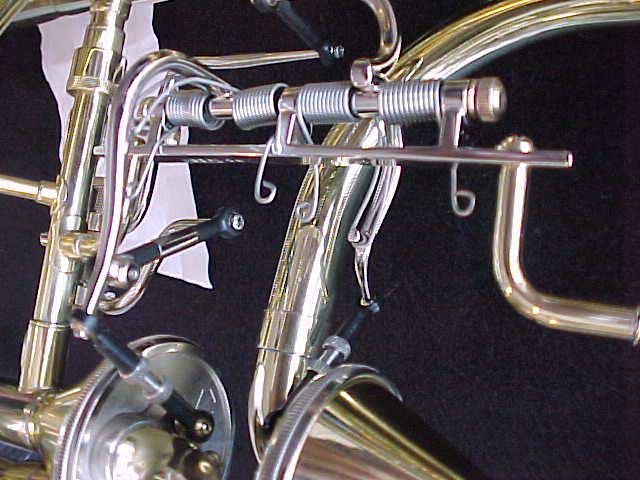
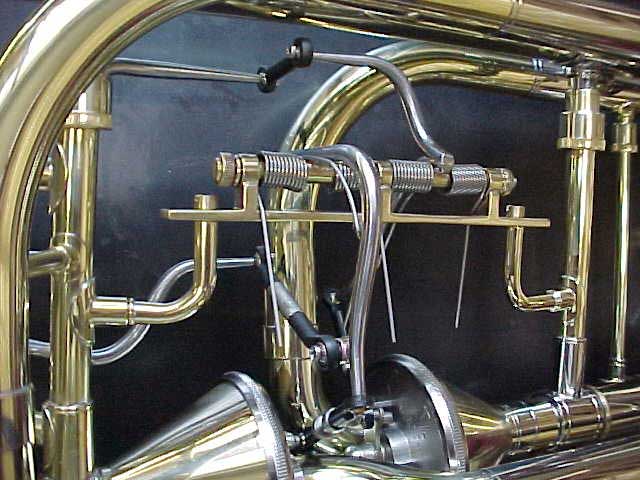
Here are images of the linkage and how it worked in relation to the lever and valve. The F linkage was a fulcrum device and the D was a sort of rocker. The reason for the choice in design was to have the levers operate in the same direction and with the same rate of throw while at the same time allowing the valves to operate as they were designed, which was contrary to one another or in opposing directions. Every effort was made to fashion the workings so as to appear in the style that Edwards levers are usually recognized. Our devices were fitted with "miniball" connections as the original connectors were found unsatisfactory in quality as well as durability. All of the components except the connectors were designed and fabricated by Daniel Oberloh, the plating was performed with great care by Rick Raymond and staff at Electrofinishing, Inc. in Kent, Washington. Thanks guys.
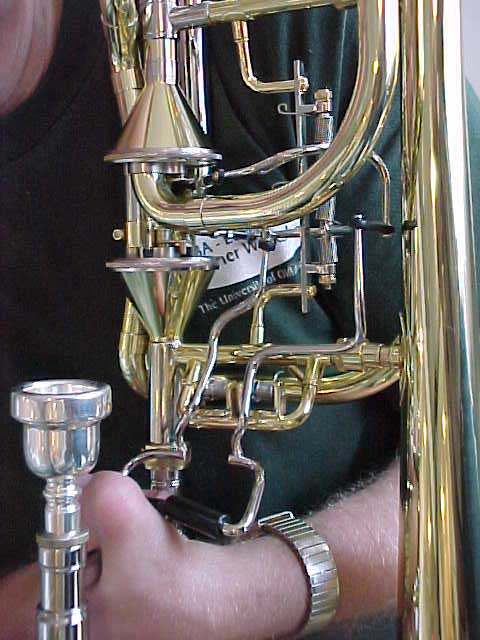
To the unfamiliar it looks cumbersome but he makes it look so easy. The levers are pulled outward not pushed. Really!
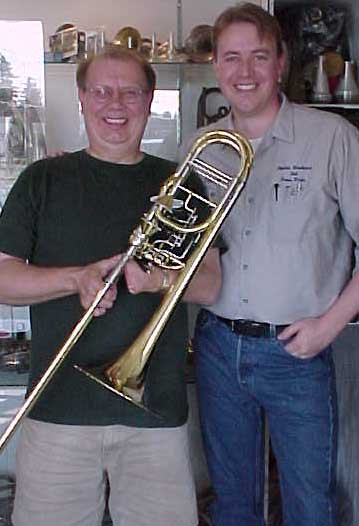
Though Terry was able to support the instrument through the use of his left forearm it remained somewhat awkward. So, a manufacturer in the Finland (www.ergobone.com) was found that produces a wonderful telescopic stand that looks and works great in addition to being reasonably priced. Dan was fortunate enough to be able to listen to his handy work in action when Terry joined him and the rest of the low brass section on stage at Seattle's Benaroya Hall in the spring of 2002 with the Northwest Symphony Orchestra to perform the Mahler Second Symphony. A proud moment for all concerned.
